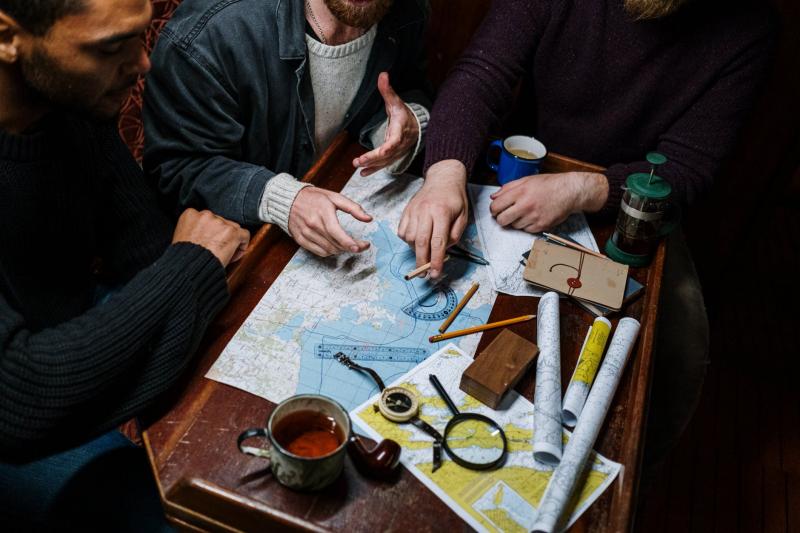Introduction

Various pieces of maps
Pexels, Andrew Neel
Τhe history or/and culture of a community or a city is sometimes visible and sometimes it remains in obscurity. The process of participatory cultural mapping can help both in finding and highlighting the culture and the tangible and intangible cultural elements of a community or city, as well as in active civic engagement and cooperation between people from different cultural backgrounds. This process can enhance the representation and inclusion of all the different cultural groups in a city or region and in the management of cultural assets.
Task

Mapping
Pexels, Cottonbro
Your task as a community cultural worker (archivist, librarian, curator etc) is to create a plan to organise a cultural mapping workshop for members of your community, area or city, on cultural festivals and their connection with local traditions and the different communities that live in your community.
Process
In the resources section under documents there is a document with detailed simplified instructions (step by step) and an example scenario on how to plan, prepare and implement a short cultural mapping workshop in your community. Furthermore, you can find useful information in the resources section where you can find the UNESCO website with the definition of cultural mapping, a UNESCO workshop facilitation toolkit for cultural mapping containing theoretical parts about cultural mapping and useful tips for a workshop. Moreover, in the videos section you can find two short videos with basic definitions of cultural mapping.
Conclusion
Once you have completed this module you will realise the importance of exploring cultural elements, institutions, resources, networks, links and patterns of usage in your community and identifying opportunities in your area, you will gain basic knowledge and skills to plan participatory cultural mapping workshops with members of your community on issues related to the cultural resources, traditions, and cultural heritage of your community or city.
Evaluation
Learning Objectives
- Users will learn about cultural mapping, participatory cultural mapping and its importance in exploring cultural elements, institutions, and traditions of the community and identifying opportunities in your area.
- Users will learn how to perform a cultural mapping workshop step by step and exploit its results.
- Users will learn to appreciate the role of cultural mapping in community history and cultural heritage.
Knowledge
- Users will learn the definition of cultural mapping and its importance in exploring cultural elements, institutions, resources, networks, links and patterns of usage in your community and identifying opportunities in your area.
- Users will learn to recognize the steps, tips and standards of a participatory cultural mapping workshop.
Skills
- Users will be able to explain the importance of cultural mapping in exploring cultural elements, institutions, resources, networks, links and patterns of usage in your community and identifying opportunities in your area.
- Users will learn to select the appropriate subject of a cultural mapping workshop, identify the appropriate techniques and methods, and questions to be asked when planning a cultural mapping workshop.
- Users will learn to plan discussions and follow steps for the cooperation with fellow citizens and stakeholders’ representatives during the cultural mapping workshop.
Attitude
- Users will be able to change their attitudes towards the use of cultural mapping as a method of importance of exploring cultural elements, institutions, resources, networks, links and patterns of usage in their community and identifying opportunities
- Users will be able to appraise the importance of cultural mapping in exploring cultural elements, institutions, resources, networks, links and patterns of usage in their community and identifying opportunities in their area.
Resources
Click each section below to see all resources available.
Resources
Click each section below to see all resources available.
Links
UNESCO Building Critical Awareness of cultural mapping: A Workshop Facilitation Guide
https://unesdoc.unesco.org/in/documentViewer.xhtml?v=2.1.196&id=p::usmarcdef_0000190314&file=/in/res






